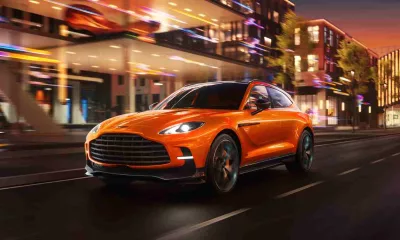The Avensis is a spacious family car with all the virtues consumers expect from a Toyota. Thanks to its European origin, the solid saloon is not as bland as a Camry and, its high specification list will impress those who value substance over style . . .By Mike Fourie, Editor
The Avensis is a spacious family car with all the virtues consumers expect from a Toyota. Thanks to its European origin, the solid saloon is not as bland as a Camry and, its high specification list will impress those who value substance over style…
Three guises of the Avensis’ predecessor, the Camry, have been available in SA since the early ‘90s. Although the Camry achieved good sales during its tenure, the final incarnation – an Australian-built model – was conspicuous for its barge-like dimensions and otherwise unimaginative styling. At the launch of Toyota’s new saloon flagship, the Prospecton-based company openly admitted that Avensis was introduced to conform to the local public’s general preference for Eurocentric automotive designs.
You can see European influences in the Avensis’ styling… a raised bonnet line, pronounced projector-style headlamp clusters, sweeping horizontal character lines on the flanks and circular-design brake lights housed in integrated tail-lamp clusters… But that’s not to say the big saloon is a beauty. Its front end, characterised by a U-shaped slatted grille, is blunt and too derivative of that seen on the Yaris and the rear is neat, but rather plain. Other gripes? The Avensis’ remote steering feel detracts from the saloon’s commendable ride and road-holding.
But, apart from those criticisms, the big saloon is hard to fault. The Avensis is 4,6 m long, 1,4 m high and has a large cabin that can seat five in comfort. And with five adults on board, luggage space is no less than a claimed 520 dm3. Given the solid build quality I observed on vehicles in the Avensis media launch fleet, and the ample standard specification list – the Japanese saloon is a competitive offering, especially at base level.
The Advanced specification is offered with either a five-speed manual or four-speed automatic 2,0-litre four-cylinder model. Full leather trim (front passenger seats are eight-way electrically adjustable), individual controls for the dual-zone climate control, automatic windscreen wipers, electrochromatic interior rear-view mirror, eight-speaker CD audio system with MP3 and WMA compatibility, one touch electric windows front and rear, electric remote side mirrors, and a leather covered steering wheel with satellite audio controls and cruise control are all standard.
The direct-injection 2,0-litre 16-valve petrol-powered engine fitted to “Advanced” models offers (VVTi) variable valve timing and produces a maximum of 108 kW and 196 N.m of torque. According to Toyota, the manual version can exceed 200 km/h and consume 8,1 litres per 100 km in the combined European fuel consumption cycle.
And, although the plucky two-litre has to work hard to propel the large-bodied Avensis, it is flattered by the NVH-suppression techniques Toyota adopted for the range… Lightweight alloys were utilised for the construction of the engines, interior build quality was stepped up, new sound deadening material is credited for annoying high frequency noises and large door seals and foam were inserted into body structure components.
On the road, the Avensis has good road-holding – 17-inch tyres are standard – a compliant ride quality thanks to the saloon’s refined MacPherson strut front and double wishbone (Celica-derived) rear suspension arrangement (both front and rear setups feature dynamic dampers to reduce road noise). The respective models in the Avensis lineup don’t really encourage enthusiastic driving (it’s a family saloon – not a sporty Lexus, after all), but a passenger is bound to experience the saloon as solid, ever-predictable and relaxed whether he or she is behind the steering wheel or not.
Moving up from the “Advanced” specification level, Toyota offers two models in the “Exclusive” grade. Xenon HID headlamps, an automatic headlight levelling system and headlamp washers, cashew leather seats and wood trim (as opposed to the anthracite and dark grey seen on “Advanced” models), a turn-by-turn navigation system and a six-CD radio/changer are added over and above the equipment offered on the 2,0-litre models.
The “Exclusive” specification is offered with a choice of either a 2,4-litre VVTi direct injection 16-valve engine mated with a 5-speed automatic transmission (with self-shifting S mode) or a 2,2-litre D-4D common rail, direct injection, turbodiesel power














